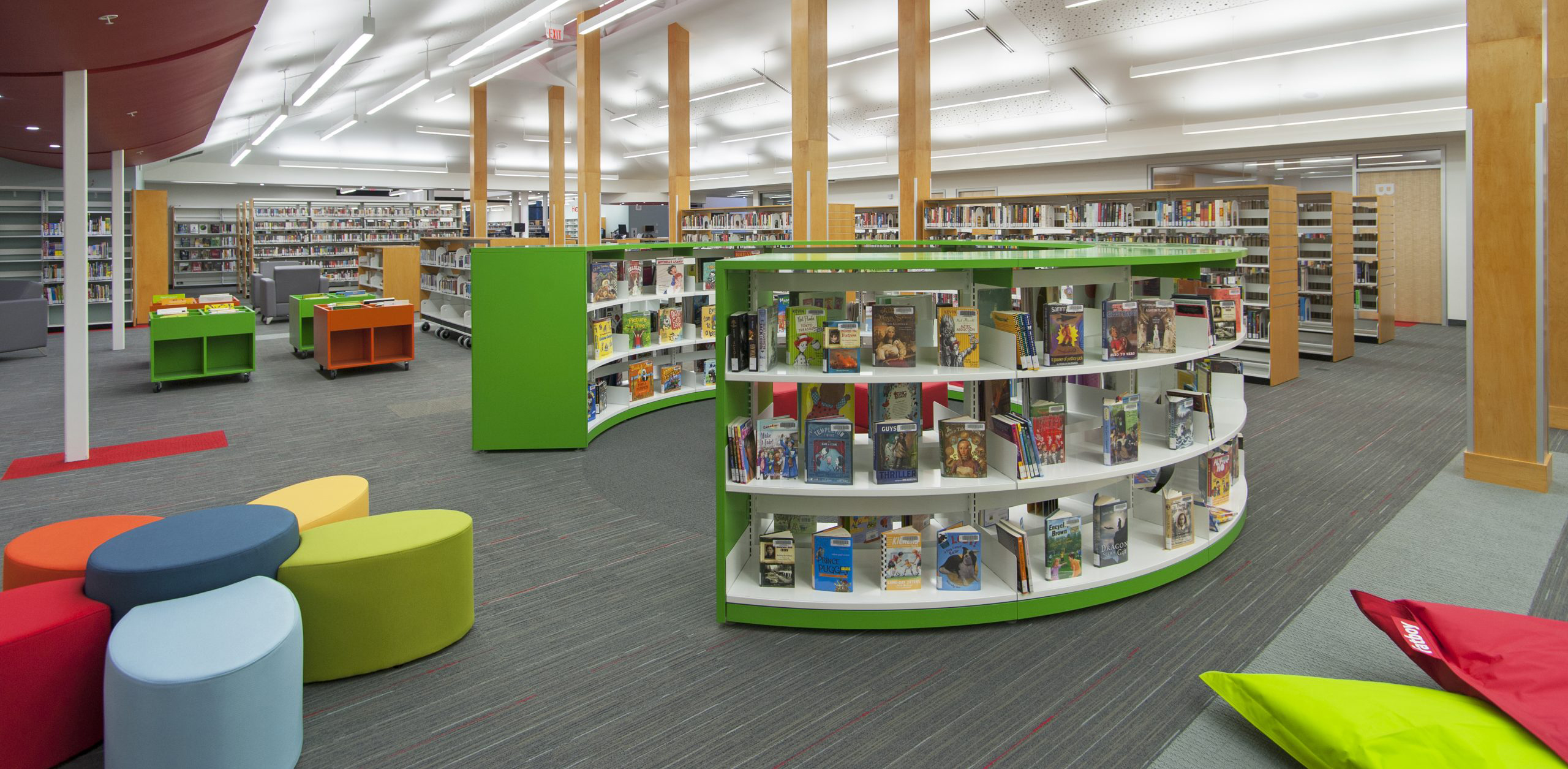
28 Aug Maximizing Space in Your Library: Innovative Interior Design Solutions
Libraries have long been essential community spaces, offering more than just books; they provide a place for learning, gathering, and growing. Nowadays, where space is often limited, maximizing the available area in a library has become increasingly important. Whether you’re dealing with a small community library or a larger public facility or even a school library, the challenge remains the same: how to make the most of every square foot. Innovative interior design solutions can help transform even the most compact library into a functional and inviting space that serves the diverse needs of its visitors.
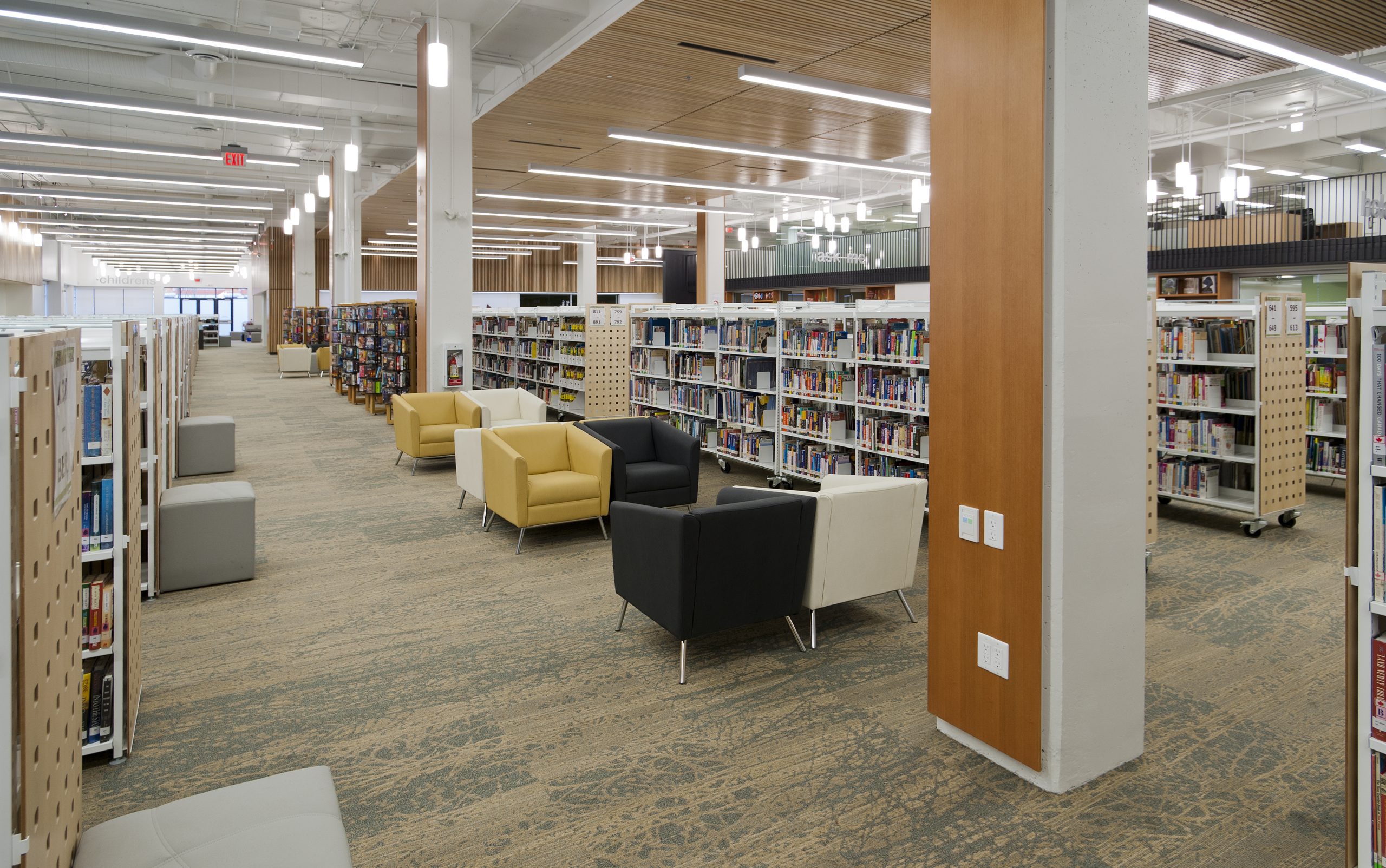
Flexible and Multi-Functional Spaces
One of the key principles of maximizing space in a library is to create flexible, multi-functional areas that can be easily adapted for different purposes. As libraries are no longer just places to read quietly, they must accommodate a range of activities—from study sessions and workshops to community events and digital learning. Designing spaces that can serve multiple functions is crucial to making the most of limited square footage. At JM&C Design we have completed many library design projects. View some of them here.
1. Movable Furniture and modular designs
Movable furniture and modular designs are essential for creating flexible spaces. Mobile shelving units, tables, and seating can be rearranged to suit various activities, from group discussions to individual study. Modular furniture that can be stacked, folded, or reconfigured allows for easy transformation of the space. For instance, a seating area with movable chairs and tables can quickly be converted into an open space for events or workshops.
Incorporating furniture with built-in storage, such as benches with hidden compartments or tables with shelving underneath, can also help free up floor space while keeping the library organized and clutter-free.
2. Zoning with movable partitions
Zoning the library into different areas for specific activities can help manage space more efficiently. Movable partitions or screens can create temporary zones for study, reading, or group activities without the need for permanent walls. These partitions can be easily moved or removed, allowing the library to adapt to different needs throughout the day.
In addition to physical partitions, using different colors, flooring materials, or lighting can visually separate areas within the library, creating distinct zones without taking up extra space.
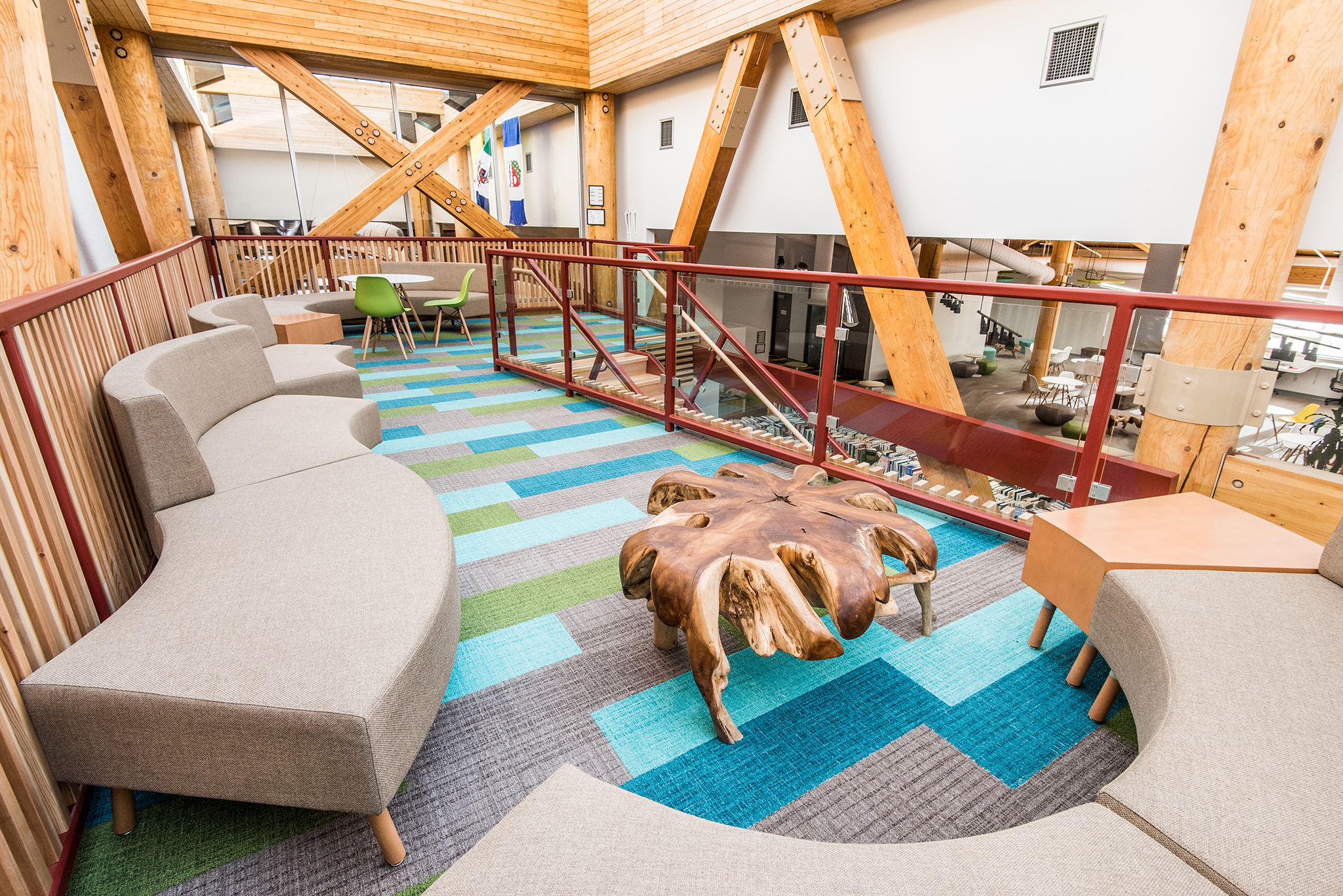
Optimizing Vertical Space
When floor space is limited, the key to maximizing a library’s capacity is to think vertically. Vertical space is often underutilized in libraries, but with the right design approach, it can significantly increase the library’s functionality and storage capacity.
1. Lofted Areas and Mezzanines
If your library has high ceilings, consider adding a mezzanine or lofted area to create additional usable space. These elevated spaces can be used for quiet study areas, reading nooks, or even small offices. A mezzanine can double the usable area of your library without expanding its footprint, making it an ideal solution for space-constrained libraries.
Ensure that these areas are accessible to all users by incorporating ramps, elevators, or other mobility solutions as needed. Safety is also paramount; sturdy railings and proper lighting are essential in lofted areas.
2. Incorporate hanging displays
Instead of cluttering up shelves with small decorative items, consider using hanging displays to add visual interest and utilize vertical space. These could be mobiles, hanging plants, or even informational banners.
Creative Storage Solutions
Efficient storage is key to maximizing space in any library. By thinking outside the box and incorporating creative storage solutions, you can keep the library organized and make the most of every inch of available space.
1. Underutilized Spaces
Look for underutilized spaces in your library and turn them into storage opportunities. For example, the space beneath stairs can be converted into built-in shelving or storage cabinets. Similarly, the tops of low shelving units can be used to display materials or provide additional storage.
Consider adding storage solutions in unexpected places, such as wall-mounted shelving above doorways or under windows. These areas are often overlooked but can provide valuable extra storage without taking up floor space.
2. Multi-Functional Furniture
Multi-functional furniture is a must-have for any space-conscious library. Consider incorporating furniture that doubles as storage, such as ottomans with hidden compartments or tables with built-in drawers. These pieces allow you to store materials while also providing functional seating or workspace.
In children’s areas, consider incorporating playful furniture that doubles as storage, such as benches that open up to reveal toy or book storage. This not only saves space but also keeps the area tidy and organized.
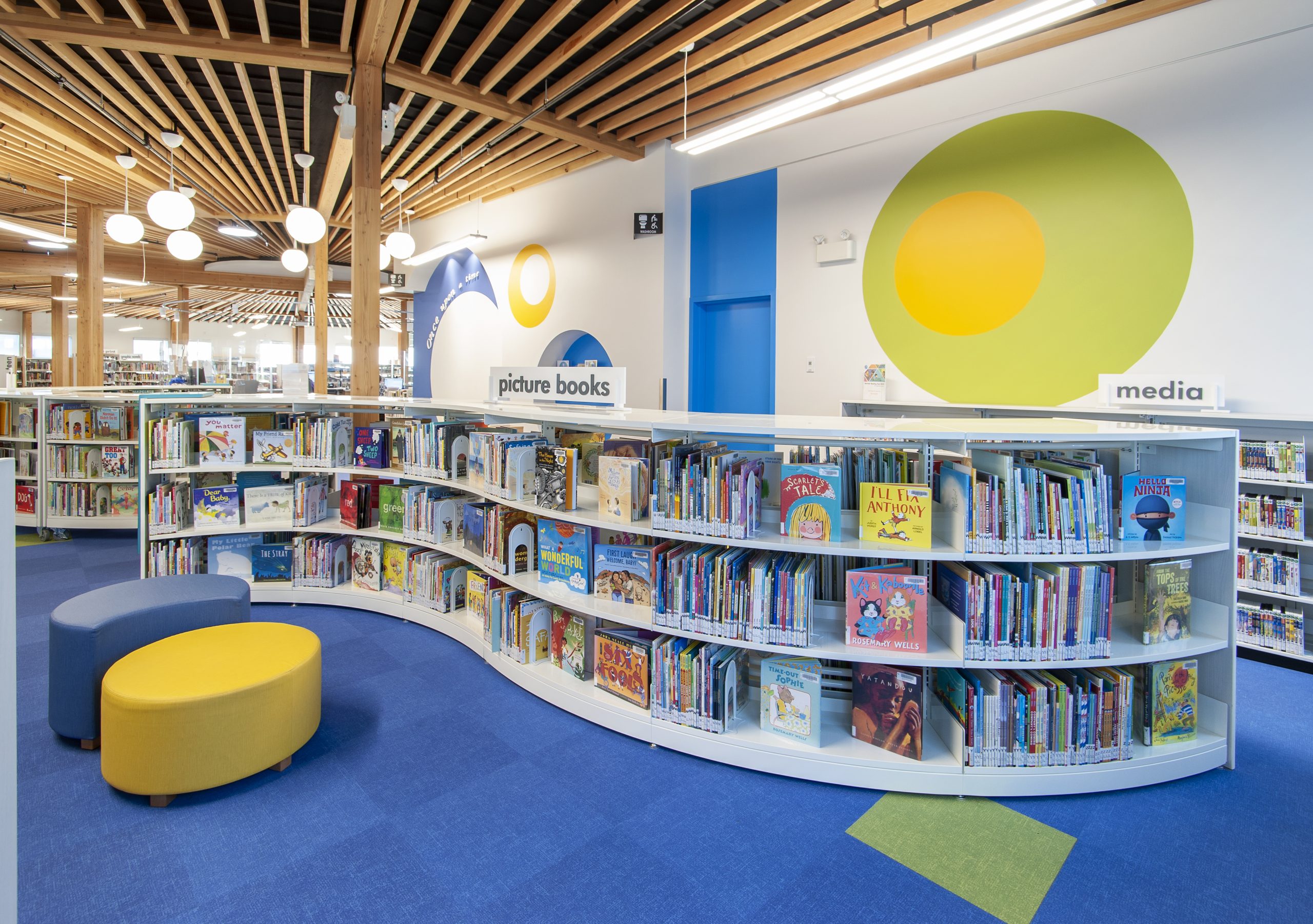
Incorporating Technology
Technology plays a crucial role in modern library design, and incorporating it effectively can help maximize space and enhance the user experience. Digital solutions can reduce the need for physical storage while also providing users with access to a vast range of resources.
1. Digital Libraries and eBooks
One of the most effective ways to maximize space in a library is to reduce the physical collection by incorporating digital resources. Offering eBooks, audiobooks, and online databases can minimize the need for extensive physical shelving while still providing users with access to a vast collection of materials.
Providing users with digital workstations or tablets can also reduce the need for large study tables or computer stations, freeing up space for other activities or seating.
2. Self-Service Stations
Self-service stations, such as automated check-out kiosks or book return systems, can help streamline operations and reduce the need for large service desks. This can free up valuable floor space for other purposes, such as seating or display areas.
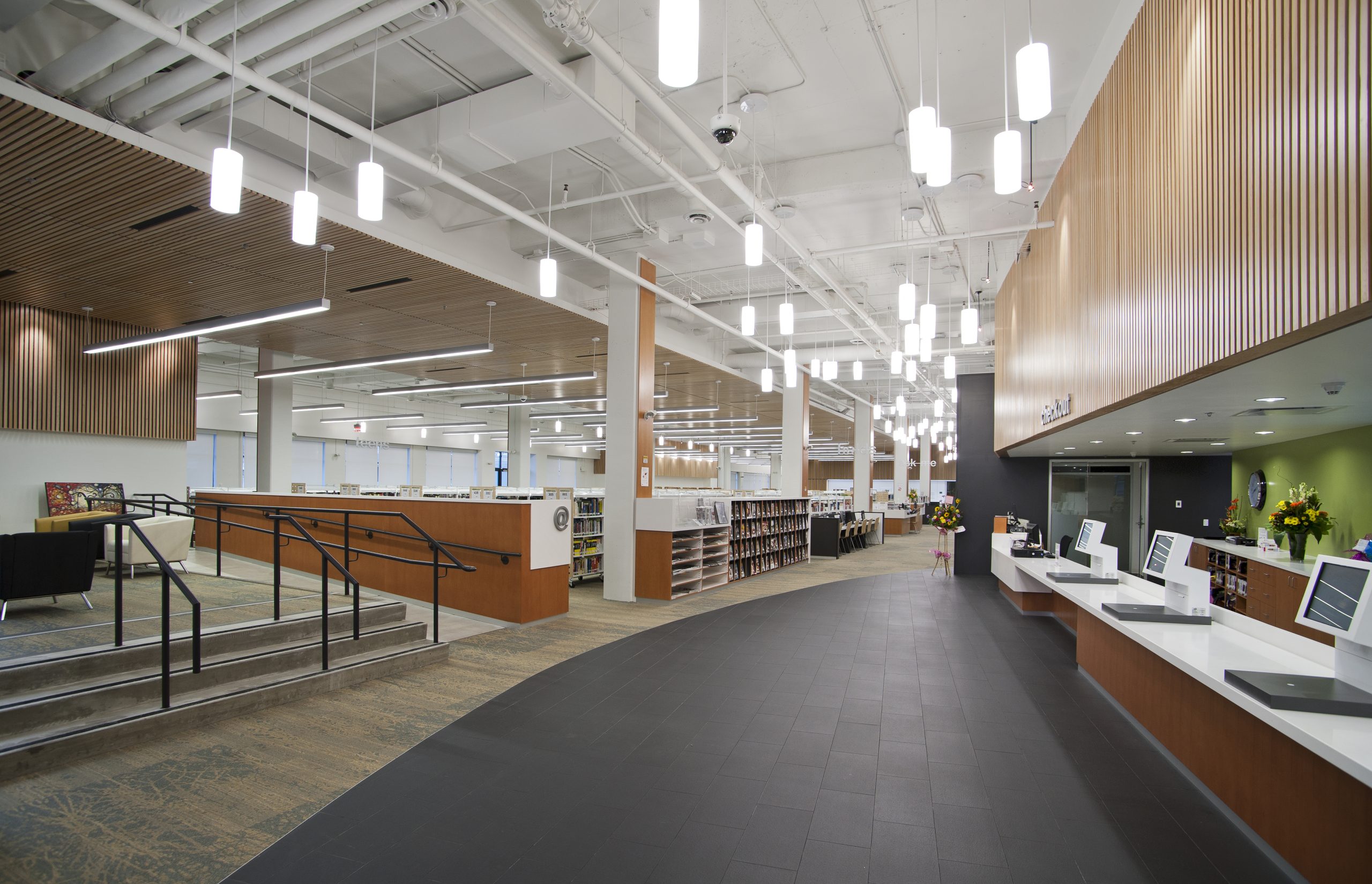
Maximizing space in your library requires a thoughtful approach to design that prioritizes flexibility, efficiency, and creativity. By incorporating movable furniture, optimizing vertical space, and implementing creative storage solutions, you can make the most of your library’s available area, regardless of its size. As libraries continue to evolve into multi-functional community spaces, innovative interior design solutions will play a crucial role in ensuring that these spaces remain welcoming, functional, and adaptable to the changing needs of their users.
Reach out to us today to discuss your project.




No Comments